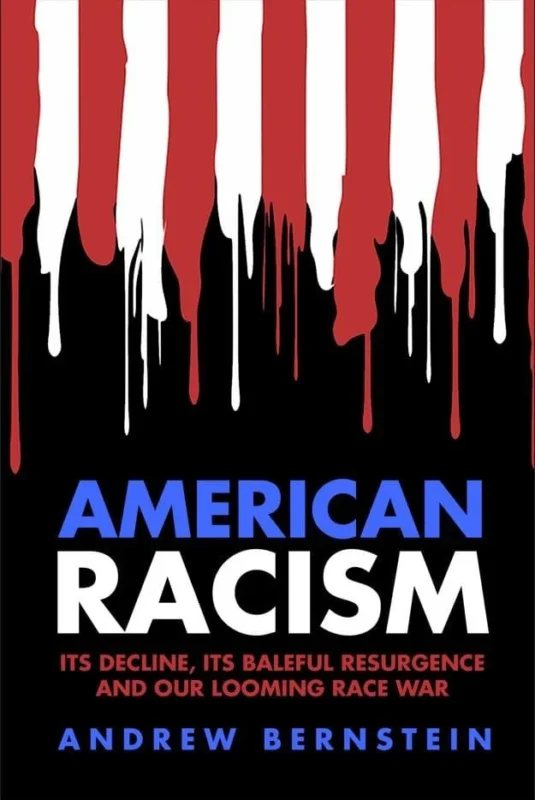“Any Day Now,” a weekly sitcom on cable TV’s “Lifetime” channel, chronicles the lives of two woman-one black; the other white – who have renewed their childhood friendship that began in Birmingham, Alabama, during the early 1960s. The show featured a special two-hour episode on racism. The manner in which it treated this issue, however, helps answer the question “Why does racism persist?” even though the writers of the show are unaware of it.
The episode began at a restaurant where Renee, the black woman, charged her white friend, Mary Elizabeth or “Mary Elizabeth,” with racism after she’d mistook a young black woman for a waitress. Later, Mary Elizabeth apologized for her mistake to the young black woman, who dismissed her apology and castigated both her and Renee with racist remarks (one which implied that Renee’s straightened hair meant she was “acting white”).
These incidents prompted Mary Elizabeth to write a magazine article on racism. To research this issue, she decided to visit her uncle Jimmy, Ku Klux Klan and Nazi sympathizer. She discovers that he owns a “hate” Web site that features a list of (black) people’s names, addresses, and schedules, along with his suggestion that they be murdered.
The young black woman who was mistook for a waitress then coincidentally applied for a job with Renee’s law firm. Thereafter, the show lapsed into a tired, narrow but pervasive treatment of racism. Renee refused to hire this woman because of her racist tirade, but the tirade was not only never said to be racist, it was dismissed as being the result of a “a bad day” for the young woman. Renee then offered her oversimplified advice: “grow up” from your rage that blames whites for the troubles of blacks. This woman’s form of racism was then dropped from the story, so as to focus instead only on the radical racism of Mary Elizabeth’s white uncle.
The show properly had its main characters denounce his views and actions, and had him convicted, in essence, on the grounds that his Web site’s “hit list” amounted to the threat of initiating physical force, not free speech. But besides that the show failed to examine the new racism embodied by the young black woman to, once again, examine KKK-style racism, it focused on aspects of racism that are consequences of its cause — but treated them, as is usual, as if they are its cause.
That is, racism is regarded as essentially the belief in the innate superiority of one’s race and the hatred of individuals of other races. The show focused on the latter, as Mary Elizabeth’s uncle was often shown spewing remarks that oozed with racial hatred.
Actually, while a consequence of racism is irrational hatred, it is not its cause. At root, racism is a form of collectivism: the belief that an individual’s identity is determined by his unchosen physiological characteristics — and not by his chosen values and actions. Since collectivists of all stripes regard themselves and others only on such terms and can only see men as having in common with each other such concrete characteristics (such as skin color), this consequently gives rise to distrust, dislike, even hatred of others “not of one’s kind.”
Yet that which is predominantly pushed today as racism’s cure also rests on collectivism. Be it affirmative action, multiculturalism, or “diversity,” collectivism is its foundation. Just as Southern racists once forcibly segregated blacks from whites in schools, employment, and housing-a policy based on race and backed by government guns; so affirmative action allegedly seeks to remedy this racism by forcible integration; that is, pointing government guns at property owners and demanding them to educate, hire, and house individuals based on race. If Dr. Martin Luther King’s professed dream is to become a reality — where individuals are judged by the content of their character instead of the color of their skin — then race must become irrelevant in human relations. Affirmative action, like Jim Crow laws, are simply two sides of the same coin.
But the degree to which Americans are rejecting individualism — which bases an individual’s identity on his chosen rational, universal values (e.g., honesty, production, independence) — to celebrate racial collectivism, was nakedly on display at the town hall meetings of President Clinton’s commission on race. These nation-wide meetings that were supposed to feature an open “dialogue” on race mostly heard grievances regarding mis- or under-representation of their racial/ethnic group from Hispanic activists, the Japanese American Citizen League, the European American Issues Forum, the American Indian Movement of Colorado, etc.
When opponents of “diversity” and affirmative action stated the injustices that these policies have perpetrated against certain individuals, they were routinely booed or told that such issues should be discussed in a way to dispel any notion that, as one member of the commission’s said, “to be white in America is a disadvantage.” So what prevailed was not any “dialogue,” but rather monologues, shoutings, and protests — wherein racism was largely equated with how whites maltreated non-whites.
And this episode of “Any Day Now” reflects this prevailing treatment of racism today. While at first the show suggested it would treat the issue of racism honestly, it soon dropped this to convey the message that racism essentially amounts to the hatred of other races by whites.
If this show had offered an honest treatment of racism, it would not have had Mary Elizabeth’s research of the issue lead her only to her racist white uncle. It would not have abandoned but rather developed the racist character of the young black woman alongside Mary Elizabeth’s uncle, and then it would draw parallels between their views on race to reveal how they both share the same evil foundation: collectivism.
And this treatment of racism could have been crafted in a manner that would not suggest it is a problem that exists just between whites and blacks. With this kind of characterization and plot, the storytellers could have demonstrated how racial collectivism takes on many forms and infects men of al l races.
If racism is ever to be fully understood and defeated, collectivism must be recognized as its foundation and individualism its antidote. But this episode on racism, reflective of the corrupt intellectual environment today, predictably fell flat in this regard. It left individuals still questioning why racism persists.









